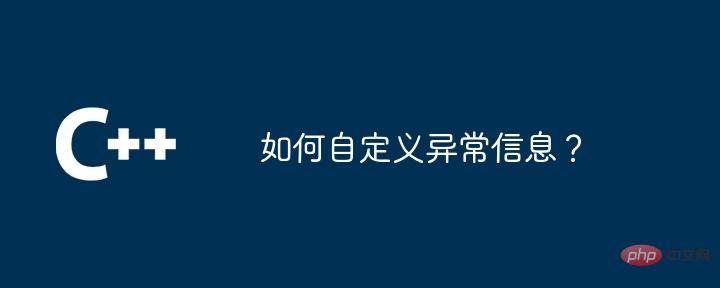Home >Backend Development >C++ >How to customize exception information?
How to customize exception information?
- 王林Original
- 2024-06-05 19:05:02893browse
Using custom exception information in Python can understand and solve problems more clearly. Among them, the raise statement can throw an exception and pass in error information. As in the example, the ValueError exception passes in custom information "Age cannot be a negative number", and a similar method can be used when dealing with invalid email addresses.

Custom exception information
When using exception handling, custom error information can help developers better understand and Solve the problem. In Python, you can use the raise statement to throw an exception and pass in a string as the error message.
Code example:
def check_age(age):
if age < 0:
raise ValueError("年龄不能为负数")
try:
check_age(-1)
except ValueError as e:
print(e)Output:
年龄不能为负数
In this example, the ValueError exception is thrown and passed in Custom error message "Age cannot be negative". This error message will be printed when age is a negative number.
Practical case:
Suppose there is a function that processes the email address entered by the user. We can use a custom exception to handle invalid email addresses:
def validate_email(email):
if not re.match(r"^[a-zA-Z0-9_.+-]+@[a-zA-Z0-9-]+\.[a-zA-Z0-9-.]+$", email):
raise ValueError("无效的电子邮件地址")
try:
validate_email("example@invalid")
except ValueError as e:
print(e)Output:
无效的电子邮件地址
This example uses regular expressions to validate the format of the email address, if the email address is not in the format Correct, a ValueError exception will be thrown with the custom error message "Invalid email address" passed in.
The above is the detailed content of How to customize exception information?. For more information, please follow other related articles on the PHP Chinese website!

